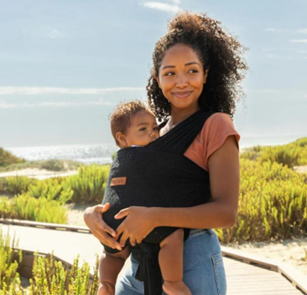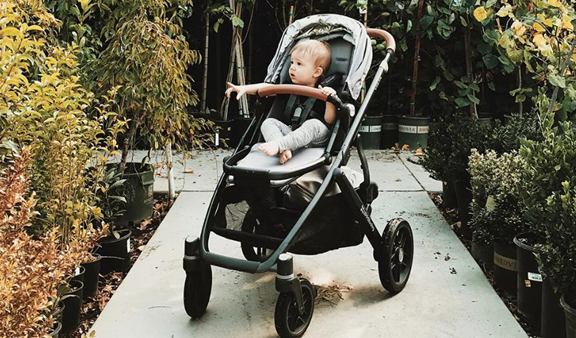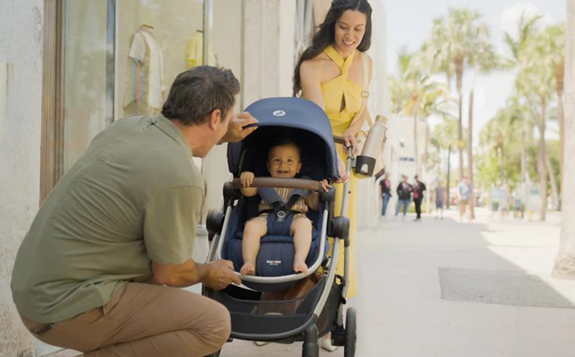As parents, ensuring our baby’s safety and well-being is always a top priority. One common question is when can baby face forward in carrier safely? The answer is not always straightforward and depends on various developmental milestones. Being aware of the right time and understanding the safety measures is essential. In this blog, you’ll learn about the ideal age, developmental signals, and key safety tips for forward-facing baby wearing. By the end, you’ll be well-informed on how to make the best decision for your baby’s comfort and safety.
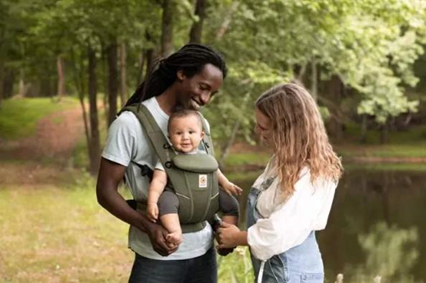
Understanding Developmental Milestones
Head and Neck Control
Before considering a forward-facing carrier, it’s crucial that your baby has strong head and neck control. This typically develops around 4-6 months of age. Proper head and neck control means your baby can hold their head up steadily without support, reducing the risk of their head flopping forward and obstructing their airway.
Sitting Unassisted
Another important milestone is when your baby can sit unassisted, typically around 6-8 months. At this stage, their spine and muscles are stronger, making it easier for them to handle the forward-facing position. This increased strength ensures better posture and support while being carried, allowing for a more comfortable and safe experience in the baby wrap carrier.
Curiosity About Surroundings
As babies grow, their curiosity about the world around them also increases. When your baby starts showing a keen interest in their surroundings, it’s a good sign they might be ready for a new vantage point. This usually aligns with the developmental timeline where head control and sitting abilities are in place.
What Age is Ideal for Forward-Facing in a Carrier?
Expert Recommendations
Most child development experts and pediatricians suggest waiting until your baby is at least 6 months old before using a forward-facing carrier. This ensures that the baby has developed the necessary muscle strength and motor skills to handle the new position safely. However, it’s essential to remember that every baby develops at their own pace.
Variations by Baby
While 6 months is a general guideline, some babies might be ready for a baby wrap carrier slightly earlier or later depending on their development. It’s essential to monitor your baby’s physical strength, head control, and behavior closely. If in doubt, consulting with your pediatrician can offer personalized advice tailored to your baby’s unique needs and ensure safe usage.
Benefits of Using a Forward-Facing Baby Carrier
Fostering Engagement with the Environment
Using a forward-facing carrier allows your baby to interact more dynamically with their environment. They can see more of the world, fostering cognitive and sensory development. This position also stimulates their social skills as they observe and engage with people and objects around them, encouraging curiosity and communication. Additionally, it offers them a broader perspective, which helps them feel more connected to the world, enhancing their learning experiences and emotional growth.
Ensuring Baby’s Comfort and Support
Modern forward-facing carriers are designed to provide ergonomic support, ensuring your baby’s spine and hips are well-supported in a natural position. Proper carriers distribute their weight evenly across your body, alleviating pressure on any one part. This thoughtful design makes outings more comfortable, reducing strain and making them more enjoyable for both you and your baby.
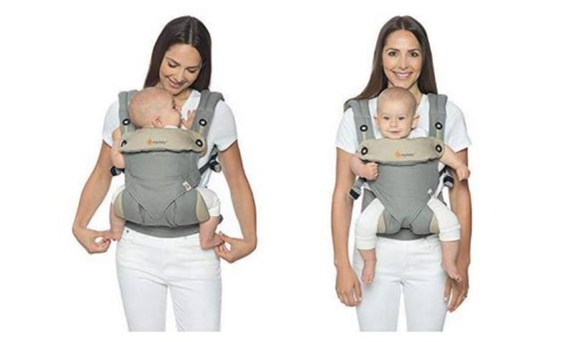
How to Choose the Right Carrier for Forward-Facing
Structured Carriers
Structured carriers are popular due to their design for even weight distribution and added support features. Look for carriers with padded shoulder straps, waist belts, and adjustable settings to tailor the fit as your baby grows. Features like breathable fabric and ergonomic design can enhance both comfort and safety.
Wraps and Slings
Wraps and slings are another option, although they usually offer less structure. Some wraps can be adjusted for forward-facing positions, but it’s critical to ensure they provide adequate support. Slings, in particular, should be used with caution as they may not offer the same level of support for the spine and hips as structured carriers.
Safety Tips for Using a Forward-Facing Carrier
Proper Positioning and Posture
Ensuring your baby is properly positioned in the carrier is vital. Your baby’s hips should be spread in an ‘M’ position, with knees higher than their bottom. Their back should be supported, and they should not be slouching. This posture helps maintain natural spinal alignment and reduces the risk of hip dysplasia.
Time Limits and Usage Guidelines
Limit the amount of time your baby spends in a forward-facing carrier. Long periods in one position can strain their developing muscles and joints. Start with short intervals, gradually increasing the duration as your baby becomes more accustomed to the new position. Always heed usage guidelines provided by the carrier manufacturer.
Conclusion
When choosing to carry your baby forward-facing in a carrier, consider their developmental milestones, age, and comfort. It's important to understand when can baby face forward in carrier, as this will vary depending on your baby's neck and head control, which typically develops around 4 to 6 months. Always prioritize their safety by selecting an appropriate carrier and using it correctly. Consult with experts to ensure that both you and your baby enjoy a safe and happy baby-wearing experience. By following these guidelines, you can make the most of this stage and create wonderful memories with your little one.
FAQ
When is it safe to turn my baby forward-facing in a carrier?
It is generally safe to start carrying your baby forward-facing when they have strong head and neck control and can sit unassisted, typically around 6 months of age. However, it’s best to consult with your pediatrician for personalized advice.
What are the risks of carrying a baby forward-facing?
Potential risks include improper spinal and hip support, which can lead to developmental issues. Additionally, prolonged use can cause physical strain on the baby’s muscles and joints. Always follow safety and time guidelines to mitigate these risks.
How should my baby be positioned in a forward-facing carrier?
Ensure that your baby is in an ‘M’ position, with their knees higher than their bottom. Support their back and avoid slouching. Proper positioning distributes weight evenly, ensuring comfort and reducing the risk of potential health issues.


